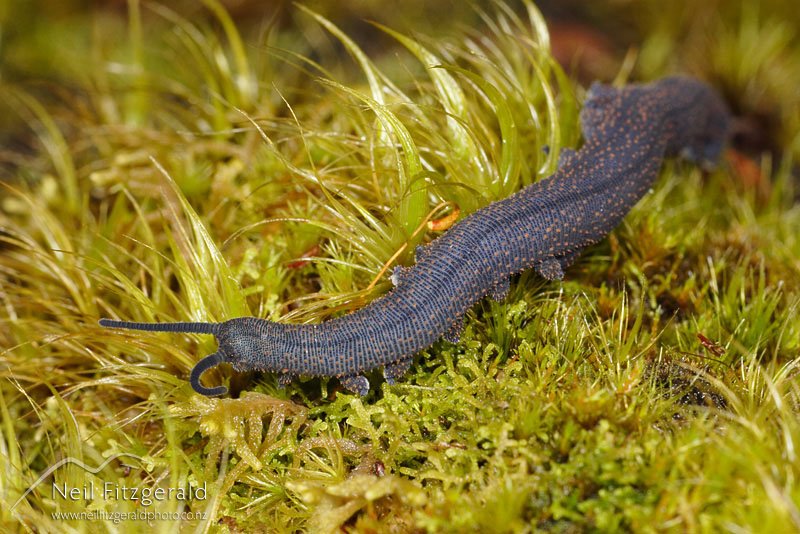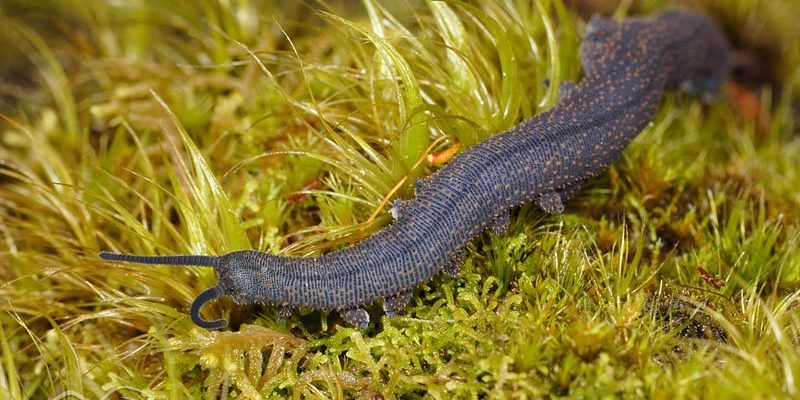
Understanding the conservation status of these creatures worldwide can shed light on the broader health of our ecosystems. Let me explain: when one species struggles, it often signals trouble for others in the same environment. So, becoming aware of velvet worms and their needs isn’t just about protecting a quirky species—it’s about maintaining biodiversity and the delicate balance of life on Earth.
What Are Velvet Worms?
Velvet worms, or *Onychophora*, belong to a group of soft-bodied invertebrates known for their unique appearance and fascinating behaviors. They typically have a long, segmented body covered in a velvety texture, which is how they got their name. With about 200 known species scattered across the globe—from tropical rainforests to temperate regions—these creatures have adapted to various environments.
You might be wondering about their lifestyle. Velvet worms are nocturnal hunters, emerging at night to capture prey like insects and other small animals. They use a remarkable method: they shoot out a sticky substance from their mouth that ensnares their prey, making it easy to consume. Isn’t that both creepy and cool?
Unfortunately, they are often hidden beneath the leaf litter or inside rotting logs, making them tricky to spot. This elusive nature adds to their mysterious charm but also hinders conservation efforts, as many people are unaware of their existence.
Why Conservation Matters
You might think, “Okay, velvet worms are interesting, but why should I care?” Here’s the thing: every species plays a role in its ecosystem. Velvet worms help control insect populations, contributing to the natural balance. When they decline, it can lead to overpopulation of pests, which might then affect plants and other animals.
Moreover, these creatures can offer insight into evolutionary biology. Studying them helps scientists understand how life evolved during the Cambrian period and how different species adapt. Think of them as tiny time capsules, each holding secrets about our planet’s past.
Conservation isn’t just about saving a single species; it’s about preserving the intricate web of life. Protecting velvet worms means protecting the habitats they rely on, which benefits countless other plants and animals.
Current Threats to Velvet Worms
Like many species, velvet worms face a number of threats. Here are some of the biggest culprits affecting their populations:
- Habitat Loss: Urbanization, deforestation, and agriculture lead to the destruction of their natural habitats. Without the lush environments they thrive in, these worms struggle to survive.
- Climate Change: As temperatures rise and weather patterns change, the delicate balance of their ecosystems is disrupted. Velvet worms rely on specific humidity and temperature levels to thrive, and any significant changes can be detrimental.
- Pollution: Pesticides and chemicals that enter their habitats can be harmful. These substances can contaminate their food sources and the environments where they live.
You can see how these factors stack up against our velvet friends. Their survival isn’t just about them; it reflects the health of entire ecosystems.
Global Conservation Efforts
Fortunately, researchers and conservationists are stepping up to protect velvet worms. Conservation efforts are multifaceted and typically focus on habitat preservation and raising awareness. Here are some of the key initiatives:
- Protected Areas: Establishing reserves and national parks where velvet worms live helps ensure their environment remains intact. These areas provide safe havens for many species.
- Research and Monitoring: Scientists are studying velvet worm populations to understand their needs better. By gathering data on their habitats, reproduction, and behavior, they can develop effective strategies for conservation.
- Public Awareness Campaigns: Educating the public about velvet worms and their ecological roles encourages support for conservation efforts. When people know what’s at stake, they are more likely to take action.
Raising awareness is crucial because, let’s face it: if no one knows these creatures exist, how can we expect them to care about protecting them?
Case Studies: Velvet Worms in Different Regions
Conservation status can vary significantly based on the region. Let’s explore a couple of case studies that illustrate the challenges and successes faced by velvet worms around the globe.
South America
In countries like Brazil and Colombia, velvet worms are often found in lush tropical rainforests. These regions are rich in biodiversity but are also hotspots for deforestation. Conservationists here are working hard to create protected areas and encourage sustainable land use.
A project in Colombia focuses on reforesting areas where velvet worms once thrived. By planting native trees and reducing deforestation activities, researchers aim to restore habitats and support these fascinating creatures.
Australia
Australia is home to several unique velvet worm species. In some regions, urban expansion threatens their habitats. Conservationists are partnering with local governments to develop green spaces and wildlife corridors to help preserve velvet worm populations. Education and community involvement are key components, helping locals appreciate the unique wildlife right in their backyard.
These case studies highlight how localized efforts can lead to significant changes. It’s inspiring to see how different regions tackle similar challenges.
The Role of Technology in Conservation
Technology is playing an increasingly significant role in wildlife conservation, including velvet worms. Here are a few interesting ways technology is helping:
- Data Collection: Researchers use drones and remote sensing technology to monitor velvet worm habitats without disrupting their environments. This allows for better data collection on their populations and habitats.
- Crowdsourcing: Apps and online platforms enable citizen scientists to report sightings and contribute to data collection efforts. This grassroots approach helps researchers gather valuable information about where velvet worms are found.
- Genetic Studies: Advancements in genetic testing can reveal important information about velvet worm species, helping scientists understand their evolutionary history and how to protect them more effectively.
It’s exciting to think about how innovative solutions can positively impact the future of velvet worms and other endangered species.
How You Can Help
Want to make a difference for velvet worms and their habitats? Here are a few easy ways to get involved:
- Support Conservation Organizations: Look for nonprofits that focus on invertebrate conservation and consider donating or volunteering.
- Spread the Word: Share information about velvet worms and their conservation status with friends and family. The more people know, the better!
- Reduce Your Environmental Impact: Simple actions like recycling, using fewer chemicals, and supporting sustainable products can help protect natural habitats.
By taking small steps in our everyday lives, we can contribute to larger conservation efforts. Every little bit counts!
Velvet worms might seem like peculiar little creatures, but their role in our ecosystems is vital. By understanding their conservation status and supporting ongoing efforts, we can help ensure these living fossils continue to thrive. The fight for their survival is a reflection of our commitment to protecting the planet’s biodiversity. So, let’s champion these amazing critters together and work to keep our world healthy and diverse for generations to come.

